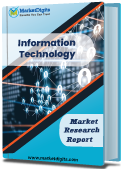- Home
- Information Technology
-
Enterprise Application Market

Enterprise Application Market by Industry Vertical (Manufacturing, BFSI, Healthcare, Retail, Telecom & IT, Government, Aerospace, Defense, and Others), Solution Type (Customer Relation Management, Enterprise Resource Planning, Supply Chain Management, Business Intelligence, Business Process Management, Content Management System, Enterprise Asset Management, Web Conferencing, and Others), Component (Solution and Services), Deployment Mode (On-premise and Cloud), and Organization Size (Large Enterprise and Small & Medium Size Enterprise) - Partner & Customer Ecosystem (Product Services, Proposition & Key Features) Competitive Index & Regional Footprints by MarketDigits - Forecast 2024 – 2032
Industry : Information Technology | Pages : 180 Pages | Upcoming : Jun 2024
Enterprise Application Market Statistics: 2030
In 2022, the Global Enterprise Application Market reached a value of $238.36 billion. It is expected to reach $527.40 billion by 2030, with a Compound Annual Growth Rate (CAGR) of 8.2% from 2023 to 2030.
The COVID-19 pandemic has caused a significant rise in online banking services worldwide. This has resulted in an increased adoption of enterprise application software for various purposes, such as customer retention and optimization. Industries like healthcare, pharmaceuticals, and retail, which previously had low usage of enterprise applications, are now expected to adopt them at a higher rate. In the post-pandemic era, healthcare companies are likely to prefer big data and cloud technology for tasks like customer requirement analysis, tracking customer orders, and predicting future situations. This necessitates the use of extensive patient information and involvement of doctors in prescribing medications. Pharmaceutical companies are increasingly utilizing customer relationship management software to streamline the distribution process of vaccines in the global market.
The growth of the enterprise application market is driven by the demand for comprehensive solutions to address business challenges. Companies are utilizing enterprise application software that integrates various applications, such as CRM, business intelligence, supply chain management, and e-commerce systems. These applications can be customized to meet specific business needs and deployed across corporate networks on different platforms. As businesses expand, there is an increasing need for enterprise applications that encode corporate policies, rules, and processes while aligning with specific business requirements. With the rising number of mobile users in offices, these applications aid employees in performing better, improving communication, enhancing corporate efficiency, and identifying new revenue-generating market opportunities.
In 2022, the large-scale enterprise segment held the dominant position in the enterprise application industry and is expected to continue this trend in the forecast period. Large enterprises adopt enterprise applications to gain a strategic advantage and outperform their competitors. These applications allow customers to extract valuable insights from a wide range of data, including historical and recent data, and perform algorithmic analysis to identify meaningful relationships and entities.
On the other hand, the small and medium-scale enterprise segment is projected to experience the highest growth during the forecast period. Small and medium-sized businesses are increasingly embracing digital platforms and leveraging enterprise application solutions to enhance productivity, intelligence, and efficiency. This shift underscores the growing significance of enterprise applications for small and medium-scale enterprises.
Regarding deployment models, the on-premise segment dominated the market in 2022 and is expected to maintain its leading position in the forecast period. This is due to the numerous advantages offered by on-premise deployments, including robust data security and safety measures. These factors contribute to the future growth of the enterprise application market. However, the cloud segment is anticipated to witness the highest growth in the coming years. Cloud deployments eliminate the need for investing in IT infrastructure as all data is stored on cloud servers, thereby increasing the demand for enterprise application software among small and medium-scale organizations.
The report focuses on analyzing the growth prospects and limitations of the enterprise application market. It employs Porter's five forces analysis to comprehend the influence of various factors, such as the bargaining power of suppliers, competitive intensity among rivals, the threat of new entrants, the threat of substitutes, and the bargaining power of buyers on the observed trends in the enterprise application market.’
Segment Review
By Component
- Solution
- Service
By Solution Type
- Customer Relation Management (CRM)
- Enterprise resource planning (ERP)
- Supply chain management (SCM)
- Enterprise Asset Management
- Business Intelligence
- Business Process Management
- Content Management System
- Web Conferencing
- Others
By Deployment Mode
- On-premise
- Cloud
By ORGANIZATION SIZE
- Large enterprises
- SMEs
By Industry Vertical
- BFSI
- Manufacturing
- Healthcare
- Retail
- Government
- Aerospace and Defense
- Telecom & IT
- Others
The enterprise application industry is segmented based on various factors, including component, solutions type, deployment, organization size, industry vertical, and region. The component segment is divided into solutions and services. Solutions type segment includes customer relationship management, enterprise resource planning, supply chain management, business intelligence, business process management, content management system, enterprise asset management, web conferencing, and others. The deployment segment is categorized as on-premise and cloud. The organization size segment is divided into large enterprises and small and medium-sized enterprises. The industry vertical segment includes manufacturing, BFSI, healthcare, retail and e-commerce, IT & telecom, government, aerospace and defense, and others. Regionally, the analysis covers North America, Europe, Asia-Pacific, and LAMEA.
The enterprise application market has been significantly influenced by the COVID-19 pandemic. Following the pandemic, the market size reached $238.36 billion in 2023 and is projected to reach $527.40 billion by 2030, growing at a CAGR of 8.2% from 2022 to 2030. The global lockdown measures and increased reliance on online activities, such as online banking and shopping, have created a need for effective management of enterprise data. This has led to a higher adoption of enterprise application software and planned investments, particularly due to the closure of retail stores and malls. Additionally, the growth of online banking services during the pandemic has further accelerated the adoption of enterprise application software for tasks like customer retention and optimization.
Furthermore, there is an expected increase in the adoption of enterprise application software across various industry verticals, including healthcare & pharmaceuticals and retail, where its usage was relatively low before the COVID-19 pandemic. In the post-pandemic era, healthcare companies are expected to prioritize big data and cloud technology for tasks such as customer requirement analysis, tracking customer orders, and predicting potential future pandemic situations. This requires access to comprehensive patient information and the involvement of doctors in prescribing medications. Pharmaceutical companies are using customer relationship management software to streamline the distribution process of vaccines in the global market. Additionally, government initiatives aimed at improving the use of enterprise application software to track customer requirements in the healthcare industry worldwide present growth opportunities for the market.
Top Influencing Factors
The global enterprise application market is primarily driven by the increasing adoption of a customer-centric approach by organizations and the competitive advantages offered by enterprise applications compared to other business software solutions. Furthermore, the growing adoption of cloud-based mobile applications contributes significantly to the market's growth on a global scale. Additionally, the rapid evolution of business models and the expansion of businesses into new geographic regions create lucrative opportunities for the rapid growth of the enterprise application market. However, the high cost associated with enterprise applications and the availability of open-source alternatives are some of the main factors that may hinder the market's growth.
The adoption of cloud and mobile applications plays a crucial role in driving the enterprise application market forward. Cloud computing, an emerging technology, allows enterprises to access and store data online, offering key characteristics such as agility, scalability, reliability, and flexibility. Cloud technology encompasses different service models, including Software as a Service (SaaS) or on-demand, where users pay based on their usage. By embracing cloud-based applications, companies can reduce their IT infrastructure costs to a certain extent, which is a primary driver behind the increased adoption. As mobile devices have become an integral part of people's lives, enterprises are investing in cloud-connected mobile applications to ensure easy access to information anytime and anywhere. These applications also enable individuals to synchronize, update, and control documents. Therefore, the adoption of cloud and mobile-enabled enterprise applications is expected to continue rising in the near future.
Key Benefits for Stakeholders:
- The study provides a comprehensive analysis of the enterprise application market, including current trends and future estimations, to identify potential investment opportunities.
- It offers information about key drivers, restraints, and opportunities, along with their impact analysis on the enterprise application market size.
- Porter's five forces analysis is utilized to assess the bargaining power of buyers and suppliers operating in the enterprise application market.
- Quantitative analysis of the enterprise application market share from 2022 to 2030 is conducted to determine its growth potential.
Cloud Engineering Market Size, Share & Trends Analysis, By Deployment (Public, Private, Hybrid), By Service (IaaS, PaaS, SaaS), By Workload, By Enterprise Size By End-use, By Region, And Segment Forecasts
TOC
Table and Figures
Methodology:
At MarketDigits, we take immense pride in our 360° Research Methodology, which serves as the cornerstone of our research process. It represents a rigorous and comprehensive approach that goes beyond traditional methods to provide a holistic understanding of industry dynamics.
This methodology is built upon the integration of all seven research methodologies developed by MarketDigits, a renowned global research and consulting firm. By leveraging the collective strength of these methodologies, we are able to deliver a 360° view of the challenges, trends, and issues impacting your industry.
The first step of our 360° Research Methodology™ involves conducting extensive primary research, which involves gathering first-hand information through interviews, surveys, and interactions with industry experts, key stakeholders, and market participants. This approach enables us to gather valuable insights and perspectives directly from the source.
Secondary research is another crucial component of our methodology. It involves a deep dive into various data sources, including industry reports, market databases, scholarly articles, and regulatory documents. This helps us gather a wide range of information, validate findings, and provide a comprehensive understanding of the industry landscape.
Furthermore, our methodology incorporates technology-based research techniques, such as data mining, text analytics, and predictive modelling, to uncover hidden patterns, correlations, and trends within the data. This data-driven approach enhances the accuracy and reliability of our analysis, enabling us to make informed and actionable recommendations.
In addition, our analysts bring their industry expertise and domain knowledge to bear on the research process. Their deep understanding of market dynamics, emerging trends, and future prospects allows for insightful interpretation of the data and identification of strategic opportunities.
To ensure the highest level of quality and reliability, our research process undergoes rigorous validation and verification. This includes cross-referencing and triangulation of data from multiple sources, as well as peer reviews and expert consultations.
The result of our 360° Research Methodology is a comprehensive and robust research report that empowers you to make well-informed business decisions. It provides a panoramic view of the industry landscape, helping you navigate challenges, seize opportunities, and stay ahead of the competition.
In summary, our 360° Research Methodology is designed to provide you with a deep understanding of your industry by integrating various research techniques, industry expertise, and data-driven analysis. It ensures that every business decision you make is based on a well-triangulated and comprehensive research experience.
• Product Planning Strategy
• New Product Stratergy
• Expanded Research Scope
• Comprehensive Research
• Strategic Consulting
• Provocative and pragmatic
• Accelerate Revenue & Growth
• Evaluate the competitive landscape
• Optimize your partner network
• Analyzing industries
• Mapping trends
• Strategizing growth
• Implementing plans
Covered Key Topics
Growth Opportunities
Market Growth Drivers
Leading Market Players
Company Market Share
Market Size and Growth Rate
Market Trend and Technological
Research Assistance
We will be happy to help you find what you need. Please call us or write to us:
+1 510-730-3200 (USA Number)
Email: sales@marketdigits.com







